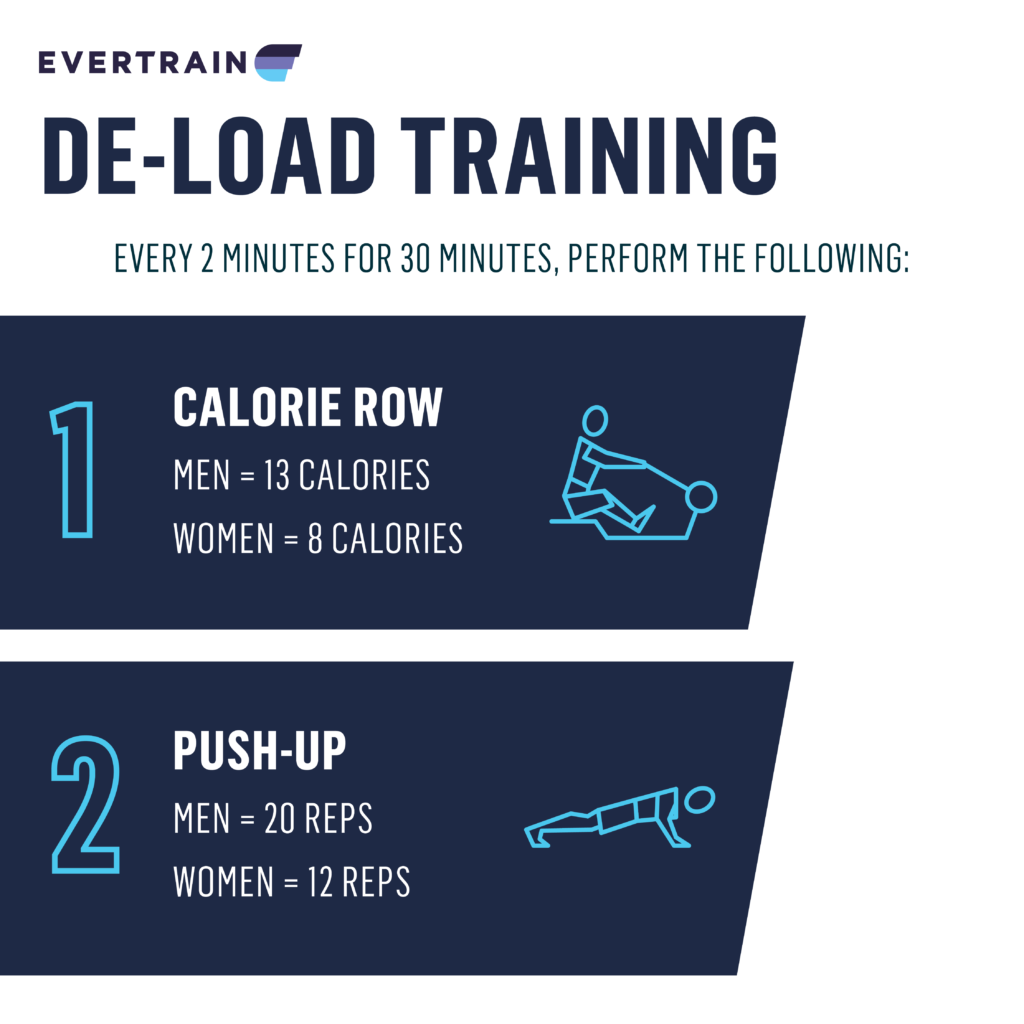You train hard. But do you prioritize giving your mind and your muscles a break? Here’s how to incorporate the principle of deload training into your regiment for even better results.
What is Deload Training:
Deload training is an intentionally programmed time period within your training schedule where you prioritize a decrease in the level of your training to allow your body to recover from the continuous wear and tear of exercise.
Why to Deload:
When you think about what exercise truly is to our bodies – a deload makes sense. Essentially, exercise (Cardiovascular Training, Resistance Training, etc.) places a large amount of strain on our central nervous system and thus incurs a strong metabolic response.
Our bodies have a great ability to adapt to stress and strain. Even though exercise is generally intentional, we still have to recover. And sometimes, continuous wear and tear can mean that our ability to truly recover is hindered.
By taking a deload week, you’re putting your body and mind in a position to avoid injury and exhaustion.
When to incorporate Deload Training:
Have you been feeling run down in the gym? Or do you feel like you’re hitting a plateau? Or maybe it’s just been hard to wrap your head around exercise?
This is when there is value in taking an intentionally planed deload period in the gym or with your exercise regiment. Our recommendation is to take an entire week (7-day period) of planned reduction in your training.
There are many schools of thought regarding when to implement a deload week. Newcomers to fitness and exercise may see value in taking a deload week once every 3 weeks. More seasoned everyday athletes may not need to deload but once every 6-12 weeks. Professional competitors may take a deload period only 1-3x per year.
How to Deload:
There is no standard deload training instruction manual. The general rule of thumb is to simply decrease the level of your training on each day you exercise. As with anything and everything exercise related, you’ll want to find a protocol that best fits you, your schedule, and your personal training preferences.
With that being said, if you typically train 4x per week – continue to train 4x per week during your deload week.
Within each day of training, however, you’ll want to focus on down-adjusting your training. There are (3) different ways you can adjust your training within a deload week.
Reduce Weights:
This is the most simple way to implement a deload training protocol into your training regiment. Here you’ll simply take every weight you typically use and cut it in half. Ideally, you’ll be be working with weights in that are 40-60% of your 1 rep max.
Example: If you typically can perform 20 squats with 100lbs, then simply cut the weight to roughly 50lbs and perform the same number of repetitions. Your total number of sets and rest periods would stay the same, as to keep training density the same.
Reduce Volume:
This deload method may be better suited for a more seasoned athlete. Here you’ll simply reduce the total number of sets on any given exercise. This will allow for you to still be familiar with heavier resistance training loads for when you return to your typical training protocol.
Example: If you typically perform 4 sets of deadlifts at a given weight, then you would simply perform 2 sets during of that same weight this specific day of your deload week. Again, your typical weight and rest periods would stay the same.

Mix It Up:
This may be the most optimal and healthiest approach to deload training. Here you’re going to take a complete 180 and find different means to be active. I like to think of this change in training method as more of an “active rest” week where I move in a way that I typically would not within a structured training plan. Here you’re not so much worried about volume or duration of your exercise. Rather, you’re prioritizing movement and activity.
Examples:
- Go for a 30 minute swim
- Bike or hike a local trail with friends
- Play a recreational sport with your co-workers
- Attend a yoga or mobility class
Summary:
Whether you’re a conditioned athlete or a recreational fitness enthusiast, it may behoove you to give your body and mind a little break every now and then. At the end of the day, most of us exercise for our greater health. Continue to honor this mentality by taking a step back from the routine every now and then. Your body will thank you.
///



Let Us Know What You Think